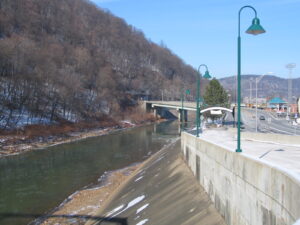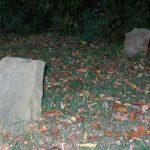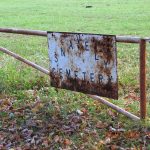 The Storm Hag
The Storm Hag
Though Pennsylvania is land-locked, we do have access to Lake Erie, a member of the Great Lakes which are notorious for their violent, unpredictable storms. Presque Isle is an area of the lake notable for the large number of shipwrecks and disappearances that have occurred there– this is where the Storm Hag is said to live on the bottom of the lake, emerging only to feast upon unfortunate sailors. She has venemous nails, strong, wraith-like arms, green pointed teeth, slimy green skin, and cat-like eyes that are the last thing her victims ever see. Like a siren, she sings an enticing song immediately before attack.
Ghost in the Stacks
I saw her out of the corner of my eye while I was studying in a remote corner of the second-level stacks in the library. She was pretty, with reddish hair and pensive, wide eyes in an intelligent face. I straightened up, patted my hair to make sure it was smooth, and took another look. She was gone. I felt my shoulders sag a bit as I turned back to my books. Oh well. There were more important things, like studying hard so that I got into medical school when I graduated next year.
Still, I kept seeing the girl’s pretty face whenever I closed my eyes, and I was still thinking about her as I left the library. A few of my friends shouted to me and I walked over to their gathering place.\
“Where’ve you been, Tony?” my friend Jeff called. “At the library,” I said, patting my backpack for emphasis. “You have been studying?” Jeff asked incredulously. I grinned. “I’ve gotta crack down now so I can get into med school,” I replied to his jibe. “Can’t always be partying with you losers!” That set them off, as I had intended, and kept the jokes flying until dinnertime. Although I didn’t admit it to myself, I chose the same spot in the stacks for my studies the following afternoon, hoping to see the pretty girl again. I was in luck. After about an hour, she appeared among the shelves, browsing intently. I noticed that she was wearing the same red flowered dress with a buttoned-down white sweater. She must like that outfit. It was time for me to do some browsing too, I thought, straightening my shirt and rising casually. I turned to walk into the shelves and stopped abruptly. She was gone! I was astonished. She must be quick, I thought. It had only taken me a few seconds to rise and turn, but in that short time she had managed to move away without me seeing her do so. I walked casually through the stacks, glancing this way and that, trying to spot her again. No luck. With a sigh, I turned back to my seat and my studies, a frustrated man. I didn’t see the girl again for several weeks. Then one day, as I rushed out of the stacks towards my friend Jeff, who was impatiently beckoning to me to hurry up, I saw her rising from a seat in a far corner. I stopped abruptly and turned, hoping to catch her eye as she moved into the stacks, but she did not turn her head. Ignoring Jeff, who was calling my name impatiently, I backtracked in the hope of at least walking passed her and saying hello. I stopped at the entrance of the stacks where the pretty girl with reddish hair had just walked. There was no one there. I shivered a bit. This was getting spooky. Was she avoiding me? Why? We had never spoken, and I certainly could not be accused of staring at her, since I had only seen her for a total of maybe thirty seconds! Shaking my head at the mystery, I went back over to Jeff and exited the library. Later that week, I decided to skip the football game to cram for a big exam. Just about everyone else was at the game, so the library was nearly deserted as I strolled over to my favorite study spot in the stacks on the second level. I’d given up on seeing the pretty girl with the reddish hair. Obviously, some things were just not meant to be. I was deep into my studies when I heard the sound of books and shelves tumbling to the floor. I leapt up and ran toward the sounds. To my horror, the pretty red-haired girl whom I’d been trying to meet lay on the floor with books all around her. She was unconscious, and my heart gave a painful thump when I realized that there was blood staining her red dress. And then, right before my eyes, she vanished. I sat down abruptly on the floor, my legs shaking too hard to hold me. I had just seen a ghost. It was then that I remembered the story of the girl who had been murdered in the library back in the sixties. I knew at once that it was her. I had just seen the reenactment of her final moments of life. I buried my face in my shaking hands, feeling a terrible grief at the tragic loss of such a beautiful girl. From what I had heard, her murderer was never apprehended. It made me furious to think that justice had never been served. Slowly, I uncoiled my body and rose to my feet. The aisle between the stacks was empty now, and so was my heart. I was too unnerved to study anymore in this deserted place, so I grabbed my books and went back to my room. I saw the girl one more time before I graduated. I was reading at my favorite study cartel when I felt a chill in the air. I shivered and looked up. And there was the ghost of the pretty girl, standing a few feet away from me. Our eyes met, and I saw fear and despair in her face. Immediately, my own face twisted in sympathy, and I impulsively held out my hand toward her. At the sight of my distress, she reached her hand back toward me as if to comfort me, and she gave me a tiny smile. Then she was gone. In that moment, I knew wherever the girl had gone after her death, she was just fine. And I felt sure that someday, somewhere, her killer would be brought to justice; if not in this world, then most assuredly in the next.


 By Katie Furman
By Katie Furman



























